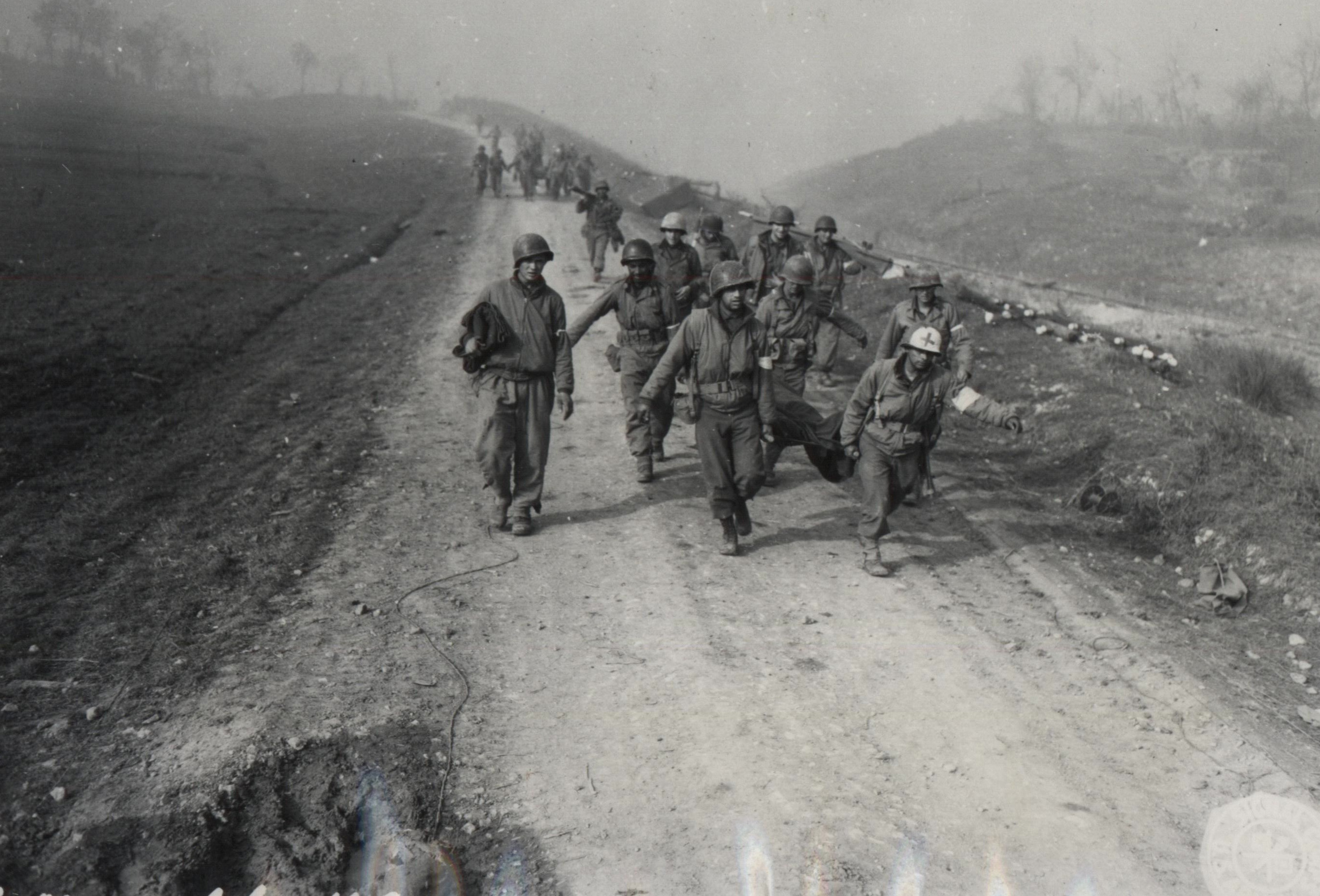
Photo: American barons during the battle of the Gari river, they carry the wounded to the rear. January 1944. Historical iconography by Associazione Linea Gustav. Source: National Archives Washington D.C.
THE AMERICANS: THE DISASTROUS DEFEAT ON THE GARI RIVER AND THE BOMBING OF THE ABBEY OF MONTE CASSINO
On January 1944, in less than 48 hours two regiments of the Texas Army National Guard, the 36th infantry division, are literally
decimated with an alleged loss of 1700 soldiers among missing, dead,
and wound. From now on, the Gari is dubbed The Bloody River.
Anglo-American soldiers and historians mistakenly confuse this
watercourse with the Rapido because of its fast, cold and deep waters,
which leave no way out to the militaries assigned to the “impossible
mission”, as it is considered by General Walker, the commander of the
division. After the war, General Mark Clark, the commander of the
American Fifth Army in Cassino, will be dragged before Congress by
survivors and his own officers to answer for heavy allegations about
the announced massacre.
The morale among men is very low, and the weather conditions make
every significant progress impossible except for the mountain section
north/northwest of Cassino, between Terelle and Caira, where French-
American units succeed in establishing a bridgehead, laying the
groundwork to get closer to the Sacro Monte. Everything seems to be
crystallized, as the ghost of defeat hovers over the heads of the Allies’
hierarchies. Under the pressing demands from New Zealand, General
Harold Alexander, the commander of the 15th Army Group in the
Mediterranean, agrees to a massive bombing against the Abbey of
Montecassino. The attack is anticipated by hundreds of leaflets
scattered to allow civilians to leave the monastery, but the short notice
of 24 hours leaves them no way out. On 15 February 1944 at 9:45 a.m.
hundreds of tons of bombs are dropped over the thousand-year-old
Abbey where 12 monks and more than 1000 civilians, including
children, have taken refuge. No German soldier among them. It is the
most inhuman and unsuccessful military operation led by the Allies, a
failure that turns what remains of the structure into an impregnable
defensive fortress that will be in the hands of the Germans until the
fall of the Gustav Line.